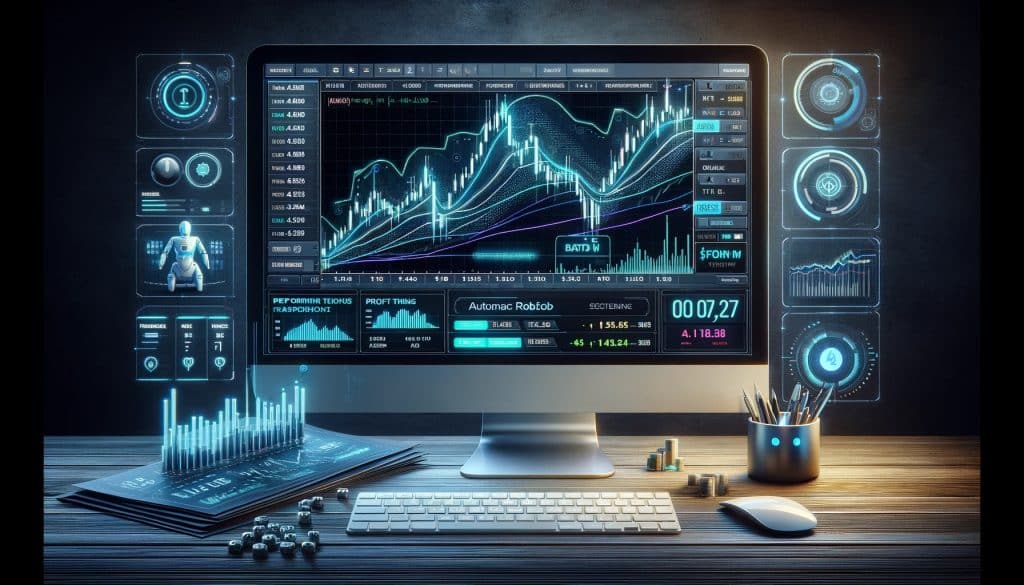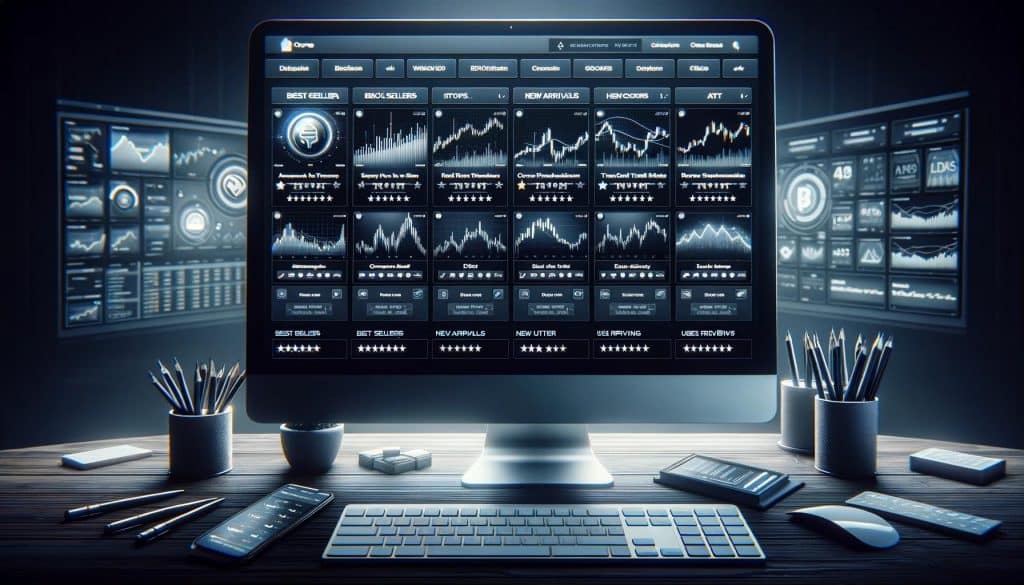The introduction of autotrading in the Forex market has significantly altered the trading landscape, offering sophisticated solutions that automate the trading process. This transformation allows traders to execute strategies with precision and efficiency, leveraging algorithms to capitalize on market opportunities. Here’s a deeper look into how auto trading is reshaping Forex trading.
Understanding Autotrading in the Forex Market
What is Auto trading?
Auto trading uses software to execute trades automatically based on predefined criteria set by the trader or developer. In the Forex market, this means utilizing algorithms to buy or sell currency pairs without manual intervention. This approach is favored for its ability to make rapid decisions based on real-time market data and predefined trading rules, maximizing opportunities in the volatile Forex market.

The Evolution of Autotrading
Autotrading has evolved from basic automated systems to sophisticated algorithms incorporating artificial intelligence and machine learning. This evolution has been driven by advancements in technology and the growing complexity of the financial markets. Today, traders can use auto trading to implement a range of strategies, from simple rule-based trading to complex predictive models that analyze vast amounts of market data to make trading decisions.
Benefits of Auto trading for Forex Traders
Efficiency and Speed
One of the primary benefits of autotrading is its ability to process and execute trades at speeds no human trader can match. This speed is crucial in the Forex market, where currency values can fluctuate rapidly. Auto trading ensures that trades are executed at the optimal moment, based on the criteria set by the trader, enhancing the potential for profitable outcomes.
Emotionless Trading
Autotrading eliminates emotional biases that often lead to poor trading decisions. By sticking to predefined strategies, auto trading systems ensure that each trade is executed based on analysis and data, not fear, greed, or hope. This objectivity helps maintain trading discipline and consistency, which are key to long-term success in Forex trading.
24/7 Market Participation
The Forex market operates 24 hours a day, five days a week, making it impossible for individual traders to monitor and trade continuously. Autotrading systems can operate round the clock, ensuring that traders don’t miss out on profitable opportunities, even when they’re asleep or away from their trading desks.

Key Components of a Successful Autotrading Strategy
Developing a Trading Algorithm
Developing a successful trading algorithm starts with a clear understanding of the trading strategy it will automate. This involves defining the entry and exit criteria, risk management rules, and any indicators or conditions that will trigger trades. Thorough backtesting on historical data is essential to refine the algorithm and ensure it performs well in different market conditions.
Backtesting Your Strategy
Backtesting involves running the trading algorithm on historical market data to evaluate its performance. This process helps identify any flaws or areas for improvement in the strategy before it’s deployed in the live market. Effective backtesting considers various market scenarios, including high volatility periods, to ensure the algorithm can handle unexpected market movements.
Risk Management in Autotrading
Effective risk management is crucial in auto trading, as even the most sophisticated algorithms can generate losses. Key risk management techniques include setting stop-loss orders, limiting the amount of capital risked on each trade, and diversifying trading strategies to spread risk. Regularly reviewing and adjusting risk parameters based on the algorithm’s performance and market changes is also essential.
Choosing the Right Autotrading Software
Features to Look for in Auto trading Software
When selecting autotrading software, look for features such as ease of use, customization options, robust backtesting capabilities, and comprehensive risk management tools. Compatibility with your preferred trading platform and the ability to implement your chosen trading strategies are also important considerations.
Top Autotrading Platforms for Forex Traders
Several autotrading platforms stand out for Forex traders, including MetaTrader 4 and 5, known for their Expert Advisors (EAs) and custom indicator capabilities. NinjaTrader and cTrader are also popular for their advanced auto trading features and user-friendly interfaces.

Integrating Autotrading into Your Forex Trading Plan
Customizing Autotrading to Fit Your Trading Style
Customization is key to integrating autotrading into your trading plan. This means selecting or developing algorithms that align with your trading style, risk tolerance, and goals. It also involves setting up your auto trading system to execute trades based on your specific criteria, ensuring it complements your overall trading approach.
Monitoring and Adjusting Your Autotrading Systems
While autotrading can automate many aspects of trading, ongoing monitoring is essential to ensure it performs as expected. This includes regularly checking the system’s performance, making adjustments to the trading algorithm as needed, and staying informed about market conditions that may impact your trading strategy.
The Future of Autotrading in Forex
Emerging Trends in Autotrading
The future of autotrading in Forex looks promising, with trends pointing towards more sophisticated algorithms that can analyze and interpret news and social media in real-time to predict market movements. The integration of blockchain technology for enhanced security and transparency in trading operations is also on the horizon.
Potential Challenges and How to Overcome Them
As auto trading becomes more advanced, challenges such as over-optimization of trading algorithms and the need for more robust cybersecurity measures arise. Overcoming these challenges requires a commitment to continuous learning, adapting to new technologies, and implementing best practices in software development and security.

Conclusion: Embracing the Autotrading Revolution
Autotrading is revolutionizing Forex trading, offering traders new opportunities to improve their trading results through efficiency, speed, and precision. By understanding the benefits and challenges of auto trading and choosing the right strategies and tools, traders can leverage this technology to gain a competitive edge in the Forex market. As the landscape of auto trading continues to evolve, staying informed and adaptable will be key to success.
FAQs about Autotrading
What is autotrading?
Autotrading, also known as algorithmic trading, involves using computer programs to execute trades automatically in the financial markets based on predefined criteria. These criteria can be based on technical analysis, statistical modeling, or other quantitative methods.
How does autotrading work?
Autotrading works by using computer algorithms to monitor the markets for certain conditions. When these conditions are met, the auto trading software executes buy or sell orders on behalf of the trader. The criteria for trades can include a variety of indicators such as price movements, technical indicators, or other market data.
Is autotrading only for experienced traders?
No, autotrading can be suitable for traders of all experience levels. However, understanding the basics of the financial markets and the specific trading platform is crucial. Beginners should start with simpler strategies and invest time in learning before moving to more complex auto trading systems.
Can autotrading guarantee profits?
No, autotrading cannot guarantee profits. While it can remove emotional decision-making and increase efficiency, the success of auto trading strategies depends on market conditions, the effectiveness of the algorithm, and risk management practices.
What are the risks associated with autotrading?
Risks include potential technical failures, such as connectivity issues or software glitches, which can result in missed trades or unintended orders. Market risk is also a factor, as unexpected market events can impact the effectiveness of trading algorithms. Additionally, over-reliance on automated systems without understanding the underlying strategy can lead to poor trading decisions.
How do I choose the right autotrading platform?
Choosing the right autotrading platform involves considering several factors, including the types of strategies it supports, ease of use, reliability, cost, and the level of customer support provided. It’s also important to research and compare different platforms and consider any platform-specific requirements, such as programming knowledge.
Can I use autotrading for any type of financial market?
Yes, autotrading can be applied to various financial markets, including Forex, stocks, commodities, and cryptocurrencies. However, the specific strategies and algorithms may vary depending on the market’s characteristics, such as liquidity, volatility, and trading hours.
Do I need to know programming to use autotrading?
While having programming knowledge can be beneficial for customizing and developing complex trading algorithms, many auto trading platforms offer user-friendly interfaces with pre-built strategies or simple ways to create strategies without needing to write code.
How can I test an autotrading strategy before going live?
Most auto trading platforms offer backtesting capabilities, allowing traders to test their strategies against historical market data to evaluate performance. Some platforms also offer paper trading or demo accounts where traders can simulate trading in real-time without risking actual money.
How do I manage risk with auto trading?
Risk management in autotrading involves setting limits on the amount of capital allocated to each trade, using stop-loss orders to limit potential losses, and regularly reviewing and adjusting the parameters of the trading algorithm based on performance and market conditions.





